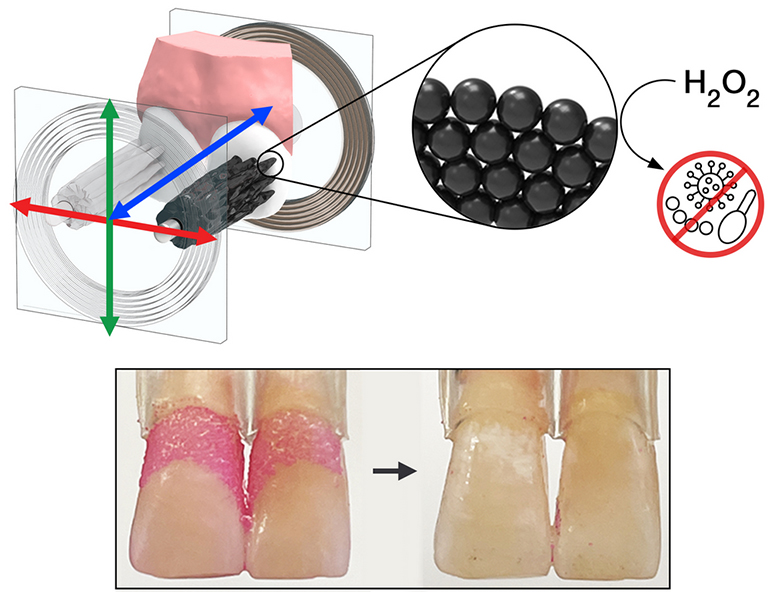Researchers at the University of Pennsylvania have developed a technique to manipulate magnetic microrobots into bristle and string-shaped structures that can brush and floss teeth. The iron oxide nanoparticle-based microrobots also activate hydrogen peroxide to release bacteria-killing free radicals to further target bacterial populations in the mouth. The technology may eventually be suitable for those with dexterity issues, or for lazy people, to take care of their oral hygiene.
So far, the researchers have shown that the microrobots can effectively remove biofilms from 3D printed replicas of human teeth and real teeth mounted in a rig. They also showed that the bristle-like projections of the robots do not harm gums in an animal model. The technology could provide similar or even better cleaning than manual techniques.
Most of us take the ability to brush our teeth and floss for granted, but for people with limited dexterity the task can be arduous and it can be difficult to keep teeth healthy. These researchers set out to develop an automated system that can take the hard work out of this process.
“Routine oral care is cumbersome and can pose challenges for many people, especially those who have hard time cleaning their teeth” said Hyun (Michel) Koo, one of the creators of the new robots. “You have to brush your teeth, then floss your teeth, then rinse your mouth; it’s a manual, multi-step process. The big innovation here is that the robotics system can do all three in a single, hands-free, automated way.”
The new technology was possible thanks to the magnetic properties of the iron oxide nanoparticles that form the microrobots and the researchers’ ability to manipulate magnetic fields. “Nanoparticles can be shaped and controlled with magnetic fields in surprising ways,” says Edward Steager, another researcher involved in the study. “We form bristles that can extend, sweep, and even transfer back and forth across a space, much like flossing. The way it works is similar to how a robotic arm might reach out and clean a surface. The system can be programmed to do the nanoparticle assembly and motion control automatically.”

Interestingly, not only can the nanoparticles physically remove bacterial biofilms from teeth, but they also have inherent anti-bacterial properties in the form of catalytic activity that can activate hydrogen peroxide and assist in destroying oral bacterial and biofilms. So far, the UPenn researchers have shown that they can manipulate the particles to effectively remove biofilms from 3D printed tooth replicas and real human teeth. They also tested the system in animals and showed that it does not damage the gums.
Study in journal ACS Nano: Surface Topography-Adaptive Robotic Superstructures for Biofilm Removal and Pathogen Detection on Human Teeth
